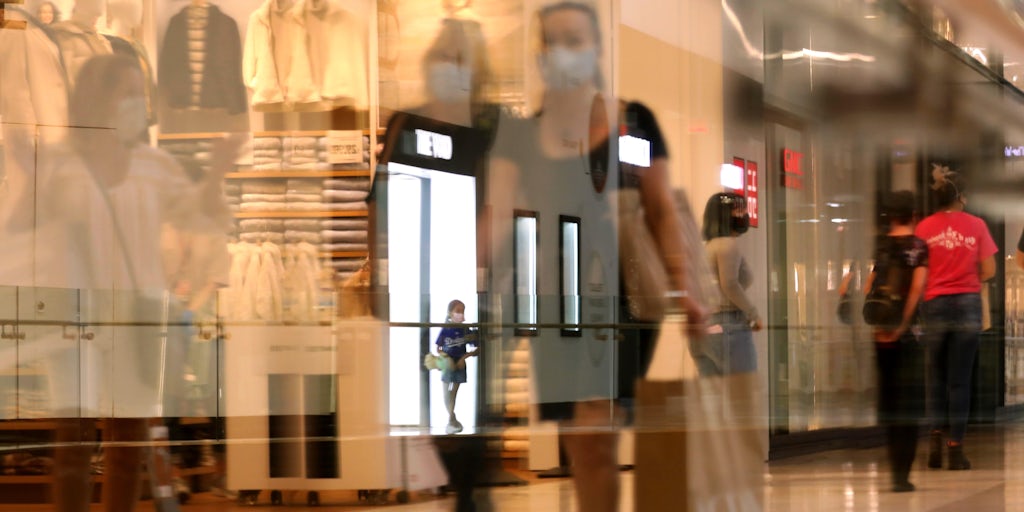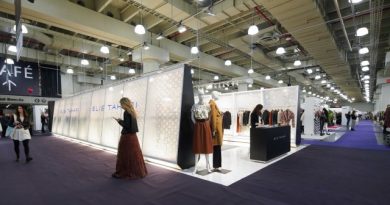How Fashion Brands Are Navigating World Cup Controversies
Big fashion brands seem to have aligned on a strategy to navigate the many controversies swirling around the FIFA World Cup: say as little as possible.
The tournament, which kicks off in Qatar on Sunday, is shaping up to be the most divisive in its 90-year history.
Human rights groups and journalists have alleged that migrant workers who built the gleaming new stadiums, hotels and infrastructure were mistreated, with the International Labour Organization recording 50 deaths and 500 serious injuries in 2020, while The Guardian alleged over 6,500 labourers have died since 2010, citing findings compiled from government sources in the workers’ countries of origin. Qatar’s record on LGBTQ+ rights is also under scrutiny: the country outlaws male homosexuality and has been accused by Human Rights Watch of detaining LGBTQ+ citizens and funding conversion therapy.
Qatar has disputed many of these claims. It says just three migrant labourers working on World Cup projects have died and has denied it funded conversion therapy, and has said that all international visitors will be welcome regardless of their sexuality, though the country is by nature conservative, and frowns on public displays of affection, regardless of sexual orientation. A senior official caused controversy in April when he said fans carrying rainbow flags could have them confiscated.
For the dozens of brands sponsoring the tournament and the teams and players participating in it, there’s been little appetite to wade into the discourse.
Puma, Nike and Adidas, which sponsor 80 percent of participating teams, have largely avoided direct criticism of Qatar’s human rights record in public statements.
:quality(70)/cloudfront-eu-central-1.images.arcpublishing.com/businessoffashion/4ZEVVZAWL5DYHPDOJFRHLNU6K4.jpg)
Adidas, which is also the tournament’s sportswear sponsor, has a page on its website summarising the brand’s expectation that the tournament will be inclusive of all people and detailing its efforts to improve workers’ rights in Qatar. A spokesperson told BoF the brand had “strongly advocated for unrestricted access for all visitors regardless of nationality, religion, sexual orientation or ethnic background. We expect the World Cup to be fully accessible to all visitors. If there are any infringements, we will pursue the matter.”
A Puma spokesperson told BoF that “diversity and inclusion are important topics for Puma … these are also the values we represent as a brand. We also believe that a boycott will not solve anything. For us, change can only come through dialogue and mutual respect.”
Nike did not respond when contacted for comment.
These brands and other tournament sponsors aren’t averse to wading into thorny topics. Over the last few years, activewear labels in particular have grown increasingly bold in publicly standing behind causes their customers support, from battling racial injustice to gun violence. Just last week, Nike cancelled its contract with NBA star Kyrie Irving after the player shared an antisemitic documentary. Last month, Adidas ended its partnership with Ye after he made antisemitic statements.
But the dynamics surrounding the World Cup are different, experts say. The tournament’s audience is so large, and so geographically and culturally diverse, that many of the tactics Western brands adopt when addressing controversies on their home turf are not applicable on a global scale.
There’s also the financial calculus: the tournament presents a marketing and product placement opportunity unparalleled in scale. At least 1.5 million fans are expected to descend on Doha between Nov. 20 and Dec. 18, with billions more expected to tune in around the world. Brands simply cannot find a bigger audience, period. In 2018, Adidas noted a significant boost in the quarter following the previous World Cup in Russia (where LGBTQ+ rights were also an issue). Brands may be betting that any backlash from Western media or consumers will pale in comparison to the boost in sales and positive marketing exposure that will come from one of the world’s highest-profile sporting events.
It’s the big elephant in the room. Of course, brands don’t want to jeopardise the money they’d earn from the tournament, but [their pre-tournament marketing] certainly feels hollow when it doesn’t touch on these issues at all.
Still, headlines about human rights continue to appear alongside analyses of each team’s odds of victory. Just this week, pop star Dua Lipa denied she was performing at the World Cup opening ceremony, saying she would visit Qatar when it fulfils its human rights promises, and the US national team decorated its training facility with rainbow-themed logos in solidarity with LGBTQ+ fans.
“It’s the big elephant in the room,” said Lauren Cochrane, a sports journalist and senior fashion writer at The Guardian. “Of course, brands don’t want to jeopardise the money they’d earn from the tournament, but [their pre-tournament marketing] certainly feels hollow when it doesn’t touch on these issues at all.”
High Stakes
The Qatari government has invested at least $220 billion in the 12 years since winning the bid to host the tournament. It’s working with high-profile ambassadors like David Beckham, who will reportedly receive £150 million ($176 million) over 10 years to promote the tournament and the country’s appeal as a tourist destination.
Fashion is playing a role too: TikTok star and serial fashion collaborator Khaby Lamé was tapped by Qatar National Bank to be its brand ambassador for the World Cup, and Balenciaga, Cartier and Hermès have all opened stores in Doha in recent months. Louis Vuitton released an officially licensed World Cup capsule collection of leather goods, and Hublot sponsored the tournament’s official countdown clock. Hublot declined to comment, while Louis Vuitton did not respond to BoF’s request for comment.
But it’s sportswear brands that are facing the most scrutiny around the tournament.
“There are PR and reputational damage risks for these major sportswear brands whose entire marketing and brand messaging over the last 10 years has been centred around inclusivity and how sport is for all, yet who have stayed silent about this World Cup,” said Kelvyn Quagraine, a football business specialist and head of brand at Art of Football, a design company which creates clothing, accessories and artwork relating to football fan culture.
Adidas appears to have gone further than most brands in acknowledging concerns about Qatar’s human rights record. As one of the seven official World Cup sponsors, it has faced greater scrutiny, and cannot afford another PR crisis during a tumultuous year for the company.
The brand said it has worked with FIFA and the Qatari government to support the establishment of an International Labour Organization office, designed to strengthen the rights of migrant workers and impose a national minimum wage.
Unfortunately, people are taking a stab at Qatar when they should be using this opportunity to get their feet on the ground, have conversations, start lobbying for causes, and make meaningful changes.
For some commentators, actions from brands will speak louder than PR-approved statements.
“Unfortunately, people are taking a stab at Qatar when they should be using this opportunity to get their feet on the ground, have conversations, start lobbying for causes, and make meaningful changes,” said Jack Thomas Taylor, associate curator at Northwestern University in Qatar.
Smaller Brands Voice Concerns
Some smaller brands are speaking out.
Last month, Art of Football penned an open letter to FIFA urging the sport’s governing body to compensate the families of workers who died in the construction of the tournament’s stadiums. This argument echoed a pressure campaign backed by Human Rights Watch, Amnesty International and FairSquare.
Earlier this month, Qatar’s labour minister rejected calls for a worker compensation fund, describing it as a “publicity stunt” in an interview with Agence France-Presse.
Danish sportswear manufacturer Hummel released three new kits for the country’s national team to wear at the tournament, which were designed “as a protest against Qatar and its human rights record,” according to a statement on the brand’s Instagram page. It continued: “we don’t wish to be visible during a tournament that has cost thousands of people their lives.” One kit features an all-black design described by the brand as “the colour of mourning”.
Qatar’s Supreme Committee, the tournament’s organisers, responded with a statement that rejected “the trivialising of our genuine commitment to protect the health and safety of the 30,000 workers who built FIFA World Cup stadiums and other tournament projects.”
Hummel was lauded by some Western media outlets and consumers for being the first and only brand directly involved in the World Cup to speak out against Qatar.
But striking the right note proved more complicated than expected. In the wake of its announcement, some observers noted that Hummel would still profit off the World Cup jerseys, and had sponsored Qatari teams in the past.
“It’s difficult to navigate through this world when you want to make a difference, but you’re also a commercial company,” the brand’s owner, Christian Stadil, told The Athletic.


